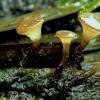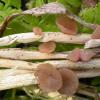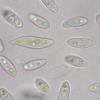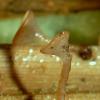
21-12-2025 09:32
Hello.A tiny ascomycete found embedded in wood in

22-12-2025 00:47
Patrice TANCHAUDBonsoir, récolte à proximité du milieu dunaire

21-12-2025 21:32
Pol DebaenstHello, Garden, Burgweg 19, Veurne, BelgiumOn 10/1

21-12-2025 21:40
Isabelle CharissouBonjour, j'aimerais connaitre les références de

21-12-2025 21:31
Pol DebaenstHello, Garden, Burgweg 19, Veurne, BelgiumOn 10/1

21-12-2025 21:31
Pol DebaenstHello, Garden, Burgweg 19, Veurne, BelgiumOn 10/1

20-12-2025 23:08
Patrice TANCHAUDBonsoir, récolte sur sol sablonneux dans l'arri�

20-12-2025 15:47
Mirek GrycHi.These grew on pine wood that was heavily covere
This is an asco I have found in humid place, on a not identified Monocotyledon stem.
Cup near 1 to 3 mm. stalk till 10mm more dark in the base.
No sclerot.
Spores 16-20 x 6 µm, septed when mature,with a lot of small guttules mostly near te extremities.
Parapyses slender (X2 µm) bulging and lightly corved at apex.
I don't arrive to name it...
Thank you for your help

The difference lies in the ascus base: R. paludosa without croziers, calopus with.
Your ascus base looks like croziers but I am quite convinced this is simple-septate, and it is only a basal protuberance. To clarify this requires asci that are connected to their basal cells.

Bonjour Jean Marc,
A première vue j'aurais dit R. paludosa dont la base était peut être dans l'eau pour que le stipe soit aussi élancé. L'environnement est propice, la taille des spores conviendrait .
Les spores septées me semnlent plutôt overmature et dans celles restées dans les asques, on devrait normalement voir une bi-guttulation , c'est peut être aussi en raison de la maturité avancée que les spores ont cet aspect ?
Je te joins 2 images , macro et spores d une récolte en ttourbière d'Auvergne pour t'expliquer mes hésitations
Amitiés Michel
EN découvrant les réponses arrivées avant la mienne, et notamment celle de Zotto, j'avais bien noté pour cette récolte l'absence decrochets à la base des asques.

Je vais vérifier l'absence de crochets sur des asques encore fixés.
Effectivement, le niveau de l'eau est haut et on a parfois l'impression que seule la cupule flotte au dessus de l'eau ! Ce qui doit expliquer ce stipe allongé.
Il y a bien des Cyperaceae à cet endroit.
Jean-Marc
Thanks everybody,
I'll verify there are no croziers on the asques.
Of course there were a lot of water (The weather is a bit rainny here....) some cups seems to float on the surface of the water! It's what the stipe is so long.
Effectively there are some Cyperaceae on this place.
Jean-Marc

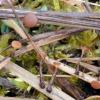
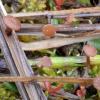
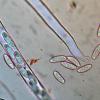
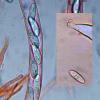
 Rutstroemia-micro-2--0001.jpg
Rutstroemia-micro-2--0001.jpg